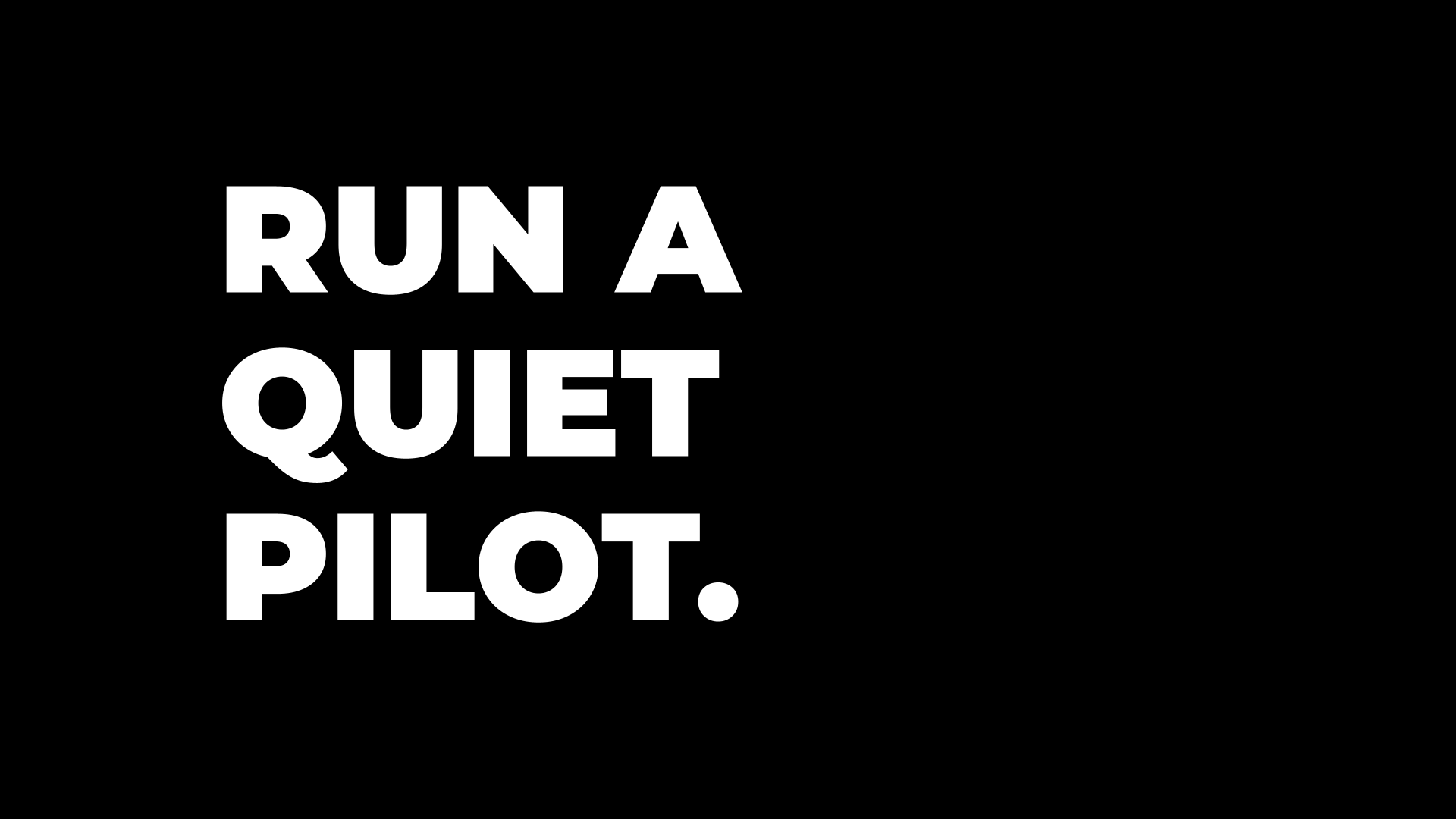
CMOs can make a big difference with CausalAI. It starts with what Mark Stouse calls a “quiet pilot.” Not a pitch. Not a deck. In Part 6 of The Causal CMO, Mark explains how GTM leaders can run skunkworks projects in the background without wasting months seeking buy-in or permission by using causal modeling. We used “deal velocity” as our project, but you can apply it to any core outcome: CAC, LTV, funnel integrity, partner yield, brand equity, even recruiting.
As we touched on in Part 4 and Part 5, the goal of a “quiet pilot” is meant to protect signal integrity. It’s not about secrecy.
If you announce you’re piloting CausalAI before you’ve proven anything, internal pressure will spike. Opinions will fly. Fear will kick in. And you’ll waste all your energy managing reactions instead of learning.
“There’s nothing unethical about doing a quiet pilot. In fact, it’s probably the most ethical way to test something that matters.”
You want to reduce friction, not accountability. To observe, adjust, and verify results before you invite others in.
Causal modeling isn’t magic. It’s just math applied to three distinct domains:
Most teams obsess over 1 and 2. But externalities drive 70–80% of performance. You’re not here to brute-force your way through them. You’re here to surf them.
“You can have the best mix in the world and still fail—if you ignore externalities.”
We used a B2B SaaS scenario:
Here’s how Mark broke it down:
Mark’s personal experience at Honeywell Aerospace demonstrates the effectiveness of running a quiet pilot:
“We improved deal velocity by almost 5%. That’s $11–12 billion of revenue moving faster into the company. The cash flow impact was extraordinary. The CFO became a fan.”
You don’t need perfection to start. You need clarity.
Start with a question like this one:
“Out of everything we’re doing, what’s really driving deal velocity?”
“Even synthetic models become templates for real ones later.”
Watch the forecast. Compare it to actuals. Adjust your mix. Then track again.
You’ll feel the change before you explain it. So will others.
“People will pass you in the hallway and say, ‘Something feels different.’ That’s your moment.”
You’re going to get humbled. So be prepared.
“You’ll realize most of what you’ve been tracking is noise. You’ll grieve. You’ll deny. You’ll get angry. Then you’ll change.”
It’s normal to go through disbelief, regret, frustration and even grief as you uncover how much of your GTM effort was based on correlation or gut feel.
But that’s the cost of clarity.
And the reward?
A system that actually tells you what’s working and how to make it better.
Not too soon. Let the model mature.
Here’s a rough timeline:
That’s when you gain credibility and the CEO and CFO lean in.
That’s when the board invites you to present.
That’s when peers start asking:
“If I gave you more budget, what could you do with it?”
Your story isn’t based on aspiration. It’s built on change.
Mark was very clear about the cross-functional application of CausalAI.
You can apply causal models across the entire business:
If your team owns outcomes, causal modeling can help you prove what drives them, even outside GTM.
If you’re a CMO, CRO, or GTM lead hoping to “earn your seat at the table,” this is how you do it. Not with big claims or flashy decks. With evidence.
“This isn’t a threat. It’s a lifeboat. Everything else is the risk.”
You don’t need better math. You need better questions and the courage to ask them before you sell the answer.
If you want to see what this looks like in practice, Mark has demo videos and 1:1 sessions available. Reach out to him directly on LinkedIn or email him at mark.stouse@proofanalytics.ai
Missed the LinkedIn Live session? Rewatch Part 6.
If you like this content, here are some more ways I can help:
Cheers!
This article is AC-A and published on LinkedIn. Join the conversation!